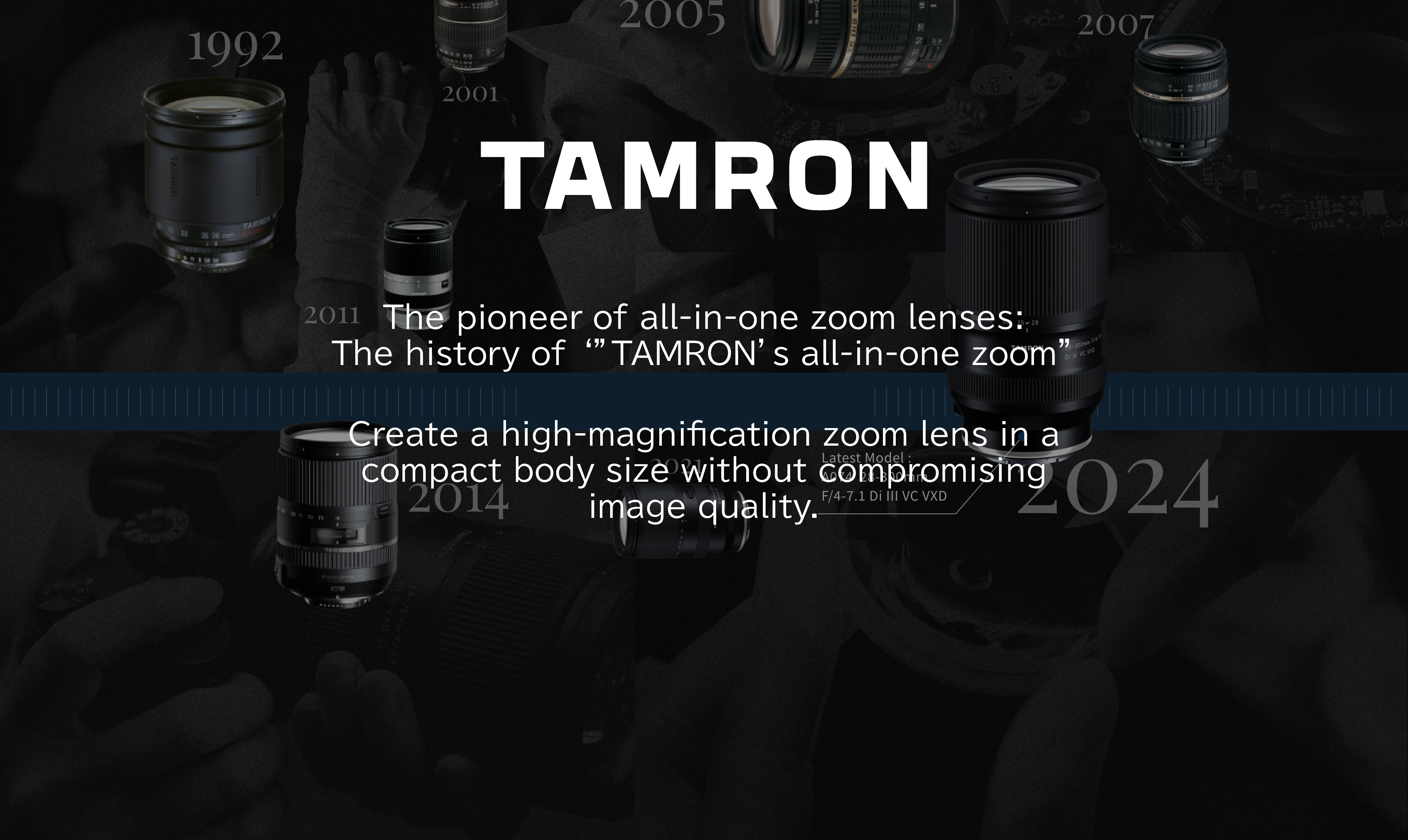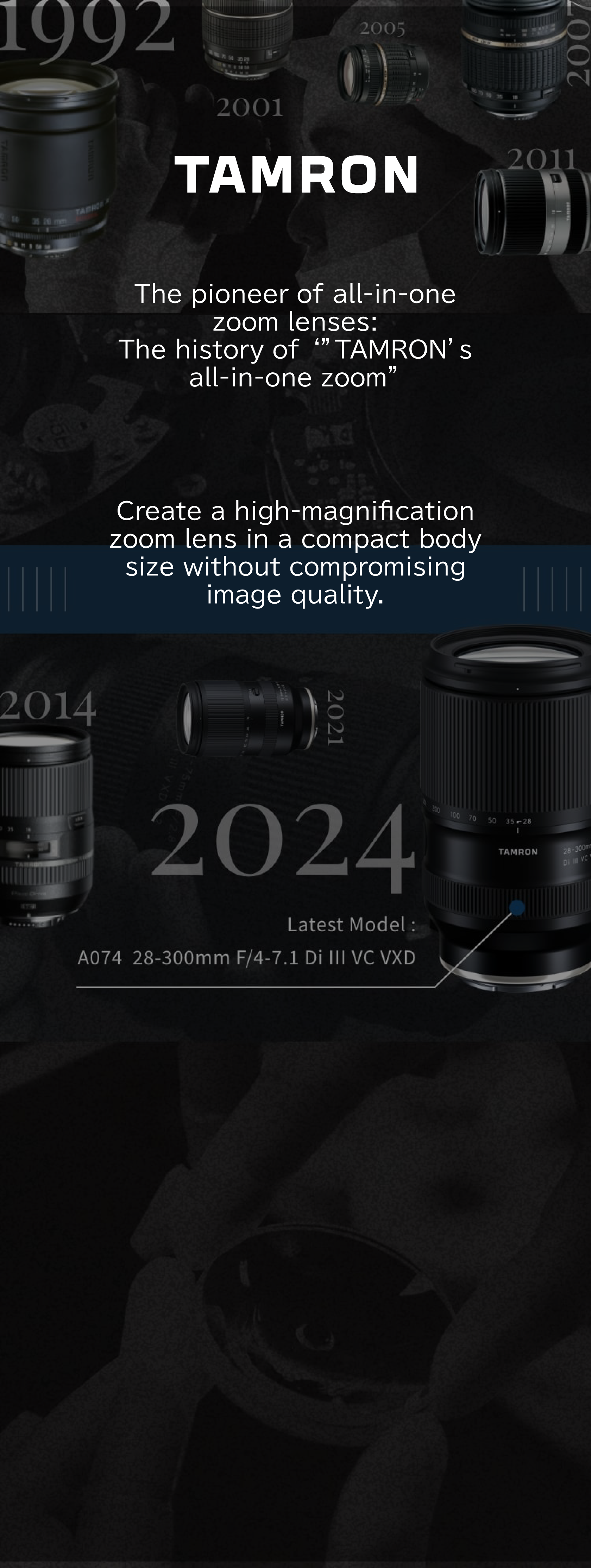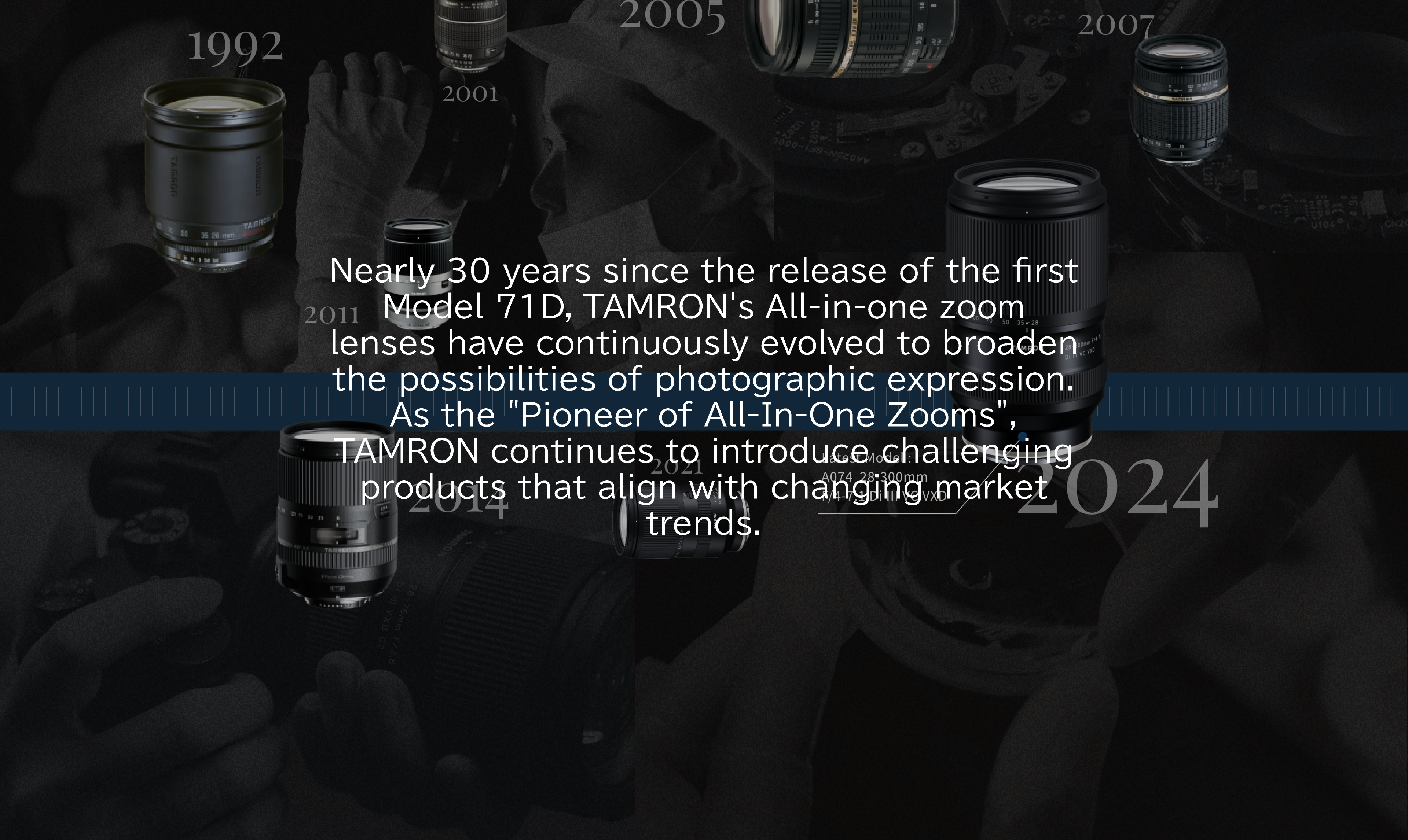The History of Challenges
These are 'The Starting Point' of TAMRON's All-In-One Zoom.
1992 - 2000
First Generation - Introduction Period
The First Mission 1992
TAMRON pioneered the “high magnification” zoom lens starting with model 71D released in 1992. The focal length ranged from 28mm to 200mm, boasting a zoom ratio of 7.1x, the highest in its class for interchangeable lenses at the time.
The Given Challenge
Development began in 1989, about three years before the release. The development team was tasked with a clear mission; creating a convenient “high-magnification” zoom lens , a wide 28mm to 200mm telephoto in a small compact body that everyone can easily carry around, the All-In-One Zoom Lens.
While similar zoom lens existed, they were bulky, heavy and the image quality was not at expectations, it was not an easy lens to use. The team set a goal for the lens size of cigarette box, making a model using a cylindrical paper model at such size. The start of the ambitious development project.
Overcoming Extreme Challenges to Achieve a Breakthrough
The development of a "convenient All-in-one zoom" proved to be extremely challenging. With each prototype, resolution tests were repeated over and over. After many trials and errors, leveraging the expertise gained from designing and manufacturing high-power zoom lenses for video cameras and the successful mass production of hybrid aspherical lenses, a breakthrough was finally accomplished.
Three Years of Effort Lead to Completion
Model 71D was infused with TAMRON's unique technologies.The optimal arrangement of hybrid aspherical lenses effectively corrected aberrations, while the new function like the Triple Cam Zoom mechanism and use of lightweight engineering plastics were adopted. With additional enhancements to production precision, the lens was finally completed.

AF 28-200mm F/3.8-5.6 Aspherical - Successfully downsized 1st-generation 28-200mm
1996 - 2000
Shorter Minimum Object Distance (MOD)
Improved model in 1996, Model 171D
The significant difference with Model 71D was the minimum object distance. While Model 71D had a distance of 2.1m, Model 171D reduced it to 0.52m(20.47in) when using at a focal length of 135mm. The maximum magnification ratio on the film also improved from 1:9.5 to 1:4.8, enhancing the usability of the All-in-one zoom lens.
This was made possible by reevaluating the focus mechanism : switching from the front-focus design of Model 71D, where the large front lens extended forward as the shooting distance decreased, to an internal-focus design in Model 171D, where a small lens inside the barrel moved for focusing without changing the length of the barrel , allowing for closer focusing without compromising image quality. Despite the variation in minimum shooting distance depending on the focal length, the development team was not yet satisfied with this model.
In 2000, Model 371D was introduced, satisfying the development team with its close-up shooting capabilities. With a minimum object distance of 0.49m(19.29in), slightly shorter than before, the lens allowed for shooting at this distance throughout the zoom range, achieving a maximum magnification ratio of 1:4 at 200mm, approaching macro lens specifications.
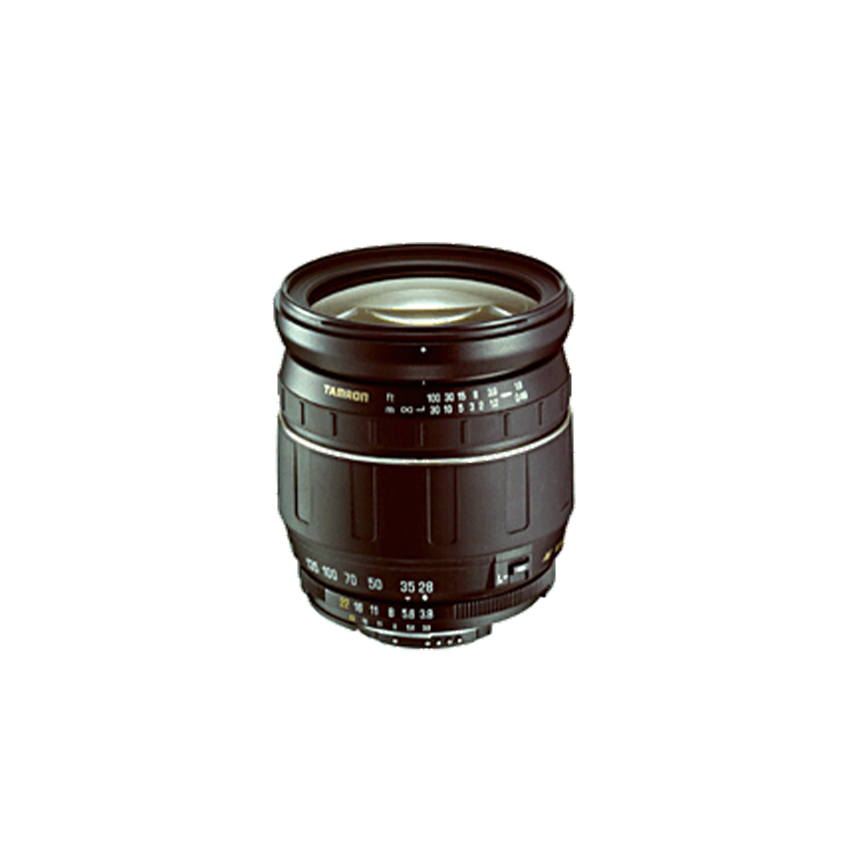
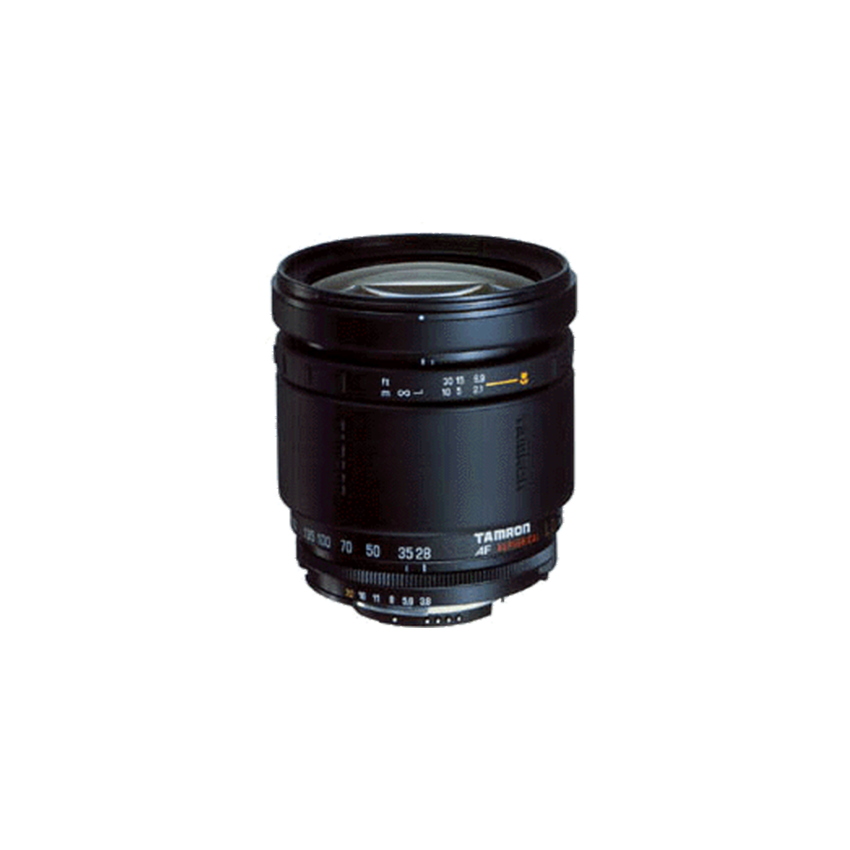
AF 28-200mm F/3.8-5.6LD Aspherical [IF] Super 2nd-generation 28-200mm with a shortened MOD
AF 28-200mm F/3.8-5.6 LD ASPHERICAL [IF] Super II-Macro3rd-generation 28-200mm with a MOD of 0.49m across the entire zoom range.
Expanding Zoom Ratio to Double Digits
Although Tamron's All-in-one zoom initially featured only the 28-200mm lens, the demand for longer focal lengths led to the introduction of Model 185D in 1999, extending the telephoto end to 300mm (zoom ratio of 10.7x). While slightly larger than models like 171D, it was well-received by users seeking longer telephoto capabilities. TAMRON continued offering the 28-200mm and 28-300mm lenses until the introduction of digital-specific lenses in 2005.
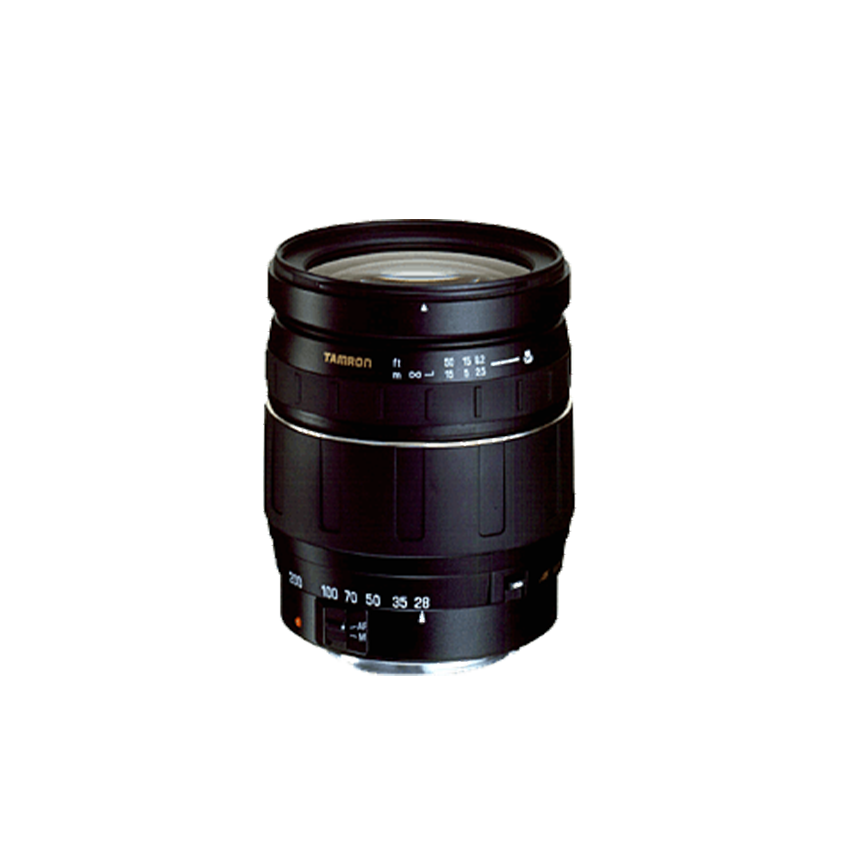
AF 28-300mm F/3.5-6.3LD Aspherical [IF] MACRO Successfully downsized 1st-generation 28-300mm
2001 - 2002
Second Generation - Downsizing Period
Lightweight and Compact
In 2001, Model A03 achieved unprecedented compactness and lightweight design.The filter size was reduced from 72mm in Model 171D to 62mm. This was made possible by TAMRON's XR (Extra Refractive index) technology, which utilised high-refractive-index glass in the front lens group, correcting aberrations with the rear lens group. This innovative optical design shortened the optical length by placing high-refractive-index lenses in the front group, enabling significant reduction in barrel size for Model A03. This model marked a significant step forward in size, aligning with the ideal of an All-in-one zoom lens that can be taken anywhere and used for any purpose. The external design of the barrel also saw significant changes, leading to the design trend seen in current models. The XR technology was also applied to the 28-300mm series, resulting in the release of Model A06 in 2002.
Around the same time, SLR cameras were undergoing a historic transformation.
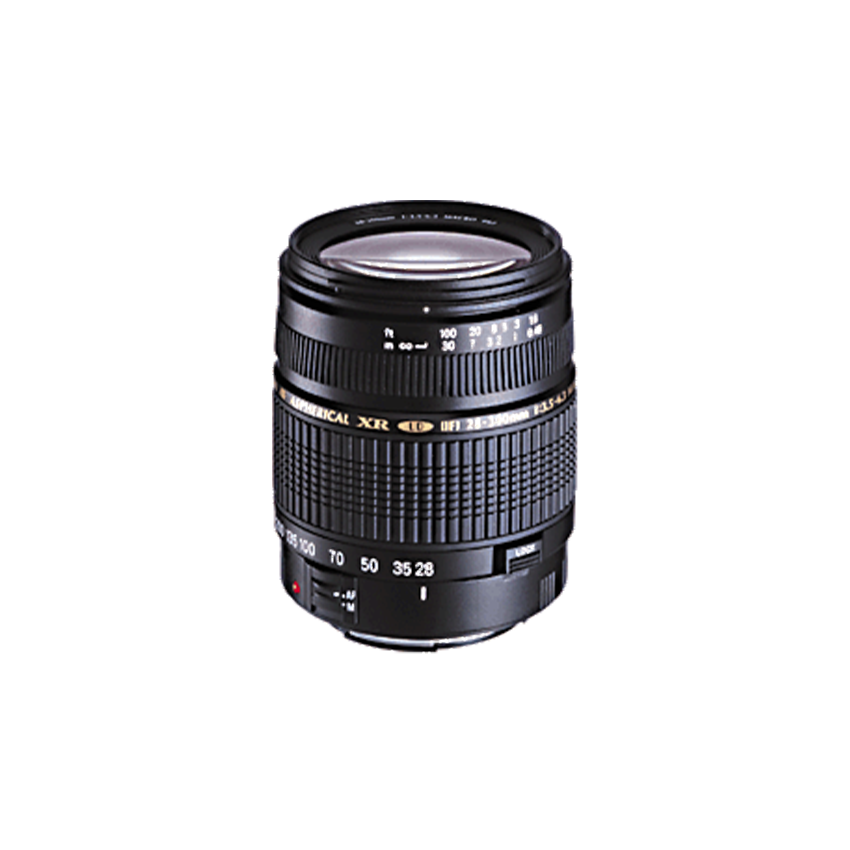
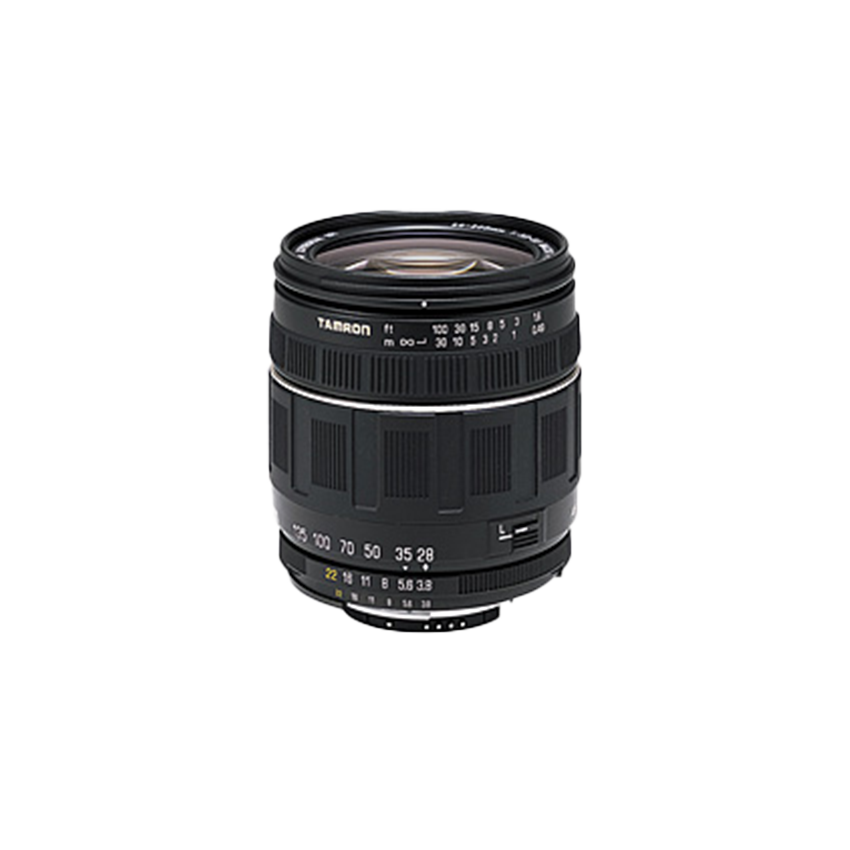
AF 28-200mm Super Zoom F/3.8-5.6 Aspherical XR [IF] MACRO4th-generation 28-200mm Achieved downsizing and reduced filter size to 62mm
AF 28-300mm Ultra Zoom XR F/3.5-6.3LD Aspherical [IF] MACRO 2nd-generation 28-300mm Achieved downsizing and reduced filter size to 62mm
2004 - 2007
Third Generation - Digital Technology Introduction Period
The Era of Digital
Around the year 2000, digital SLR cameras became more affordable, leading to rapid adoption due to their compatibility with computers and printers, as well as cost savings from eliminating film and development costs. However, digital imaging posed challenges such as increased emphasis on lens aberrations, flare, and ghosting compared to film. Internal reflections causing flare became a particular issue, and traditional coatings were often insufficient. Tele-centricity (optical systems where light and the optical axis are considered parallel) also became more important.
To address these issues, TAMRON introduced lenses optimized for digital characteristics with specialized optical designs and coatings under the "Di (Digitally integrated) series". In 2004, a full-frame lens Model A061 was released based on the All-in-one zoom Model A06 (for film cameras), but as it is a full-frame lens, when the lens was used on an APS-C camera, the 28mm wide-angle end became equivalent to 42mm*, skewing towards telephoto.
As a result, TAMRON developed All-in-one zoom lenses dedicated to APS-C sensors, unveiling the zoom Model A14 in 2005 with a focal length of 18-200mm, equivalent to 27-300mm* in full-frame terms. This marked the debut of the "Di II series" tailored for APS-C sensors.
In 2006, the 28-200mm Model A03 was also revamped into the digital-compatible Model A031 (Di series).
* For Canon EF mount, the 35mm equivalent is 1.6x.
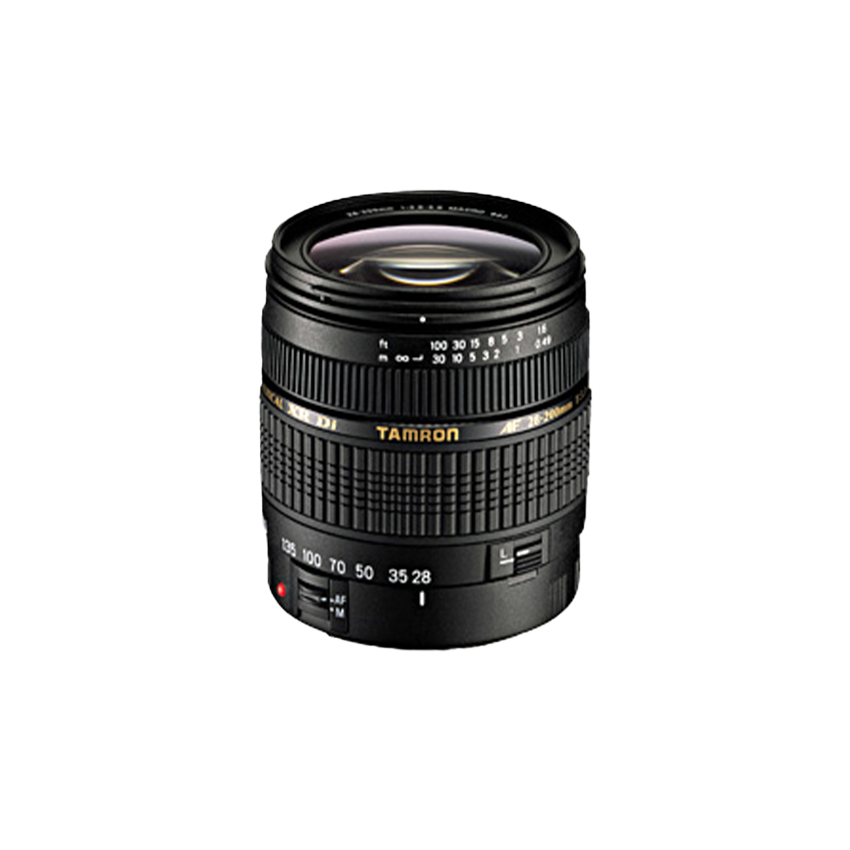
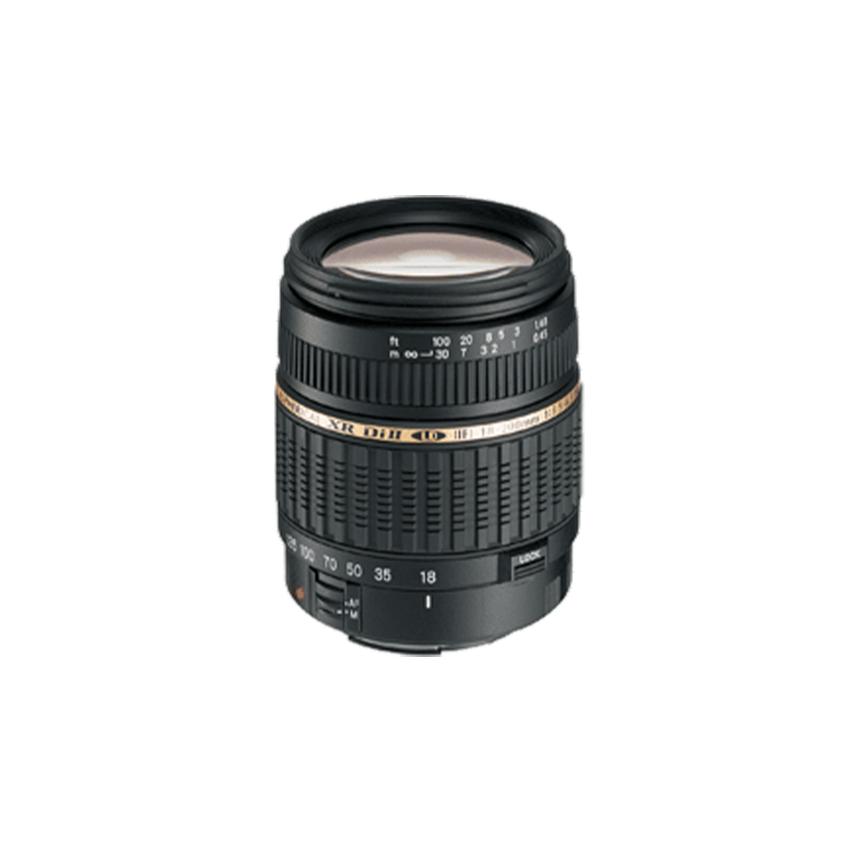
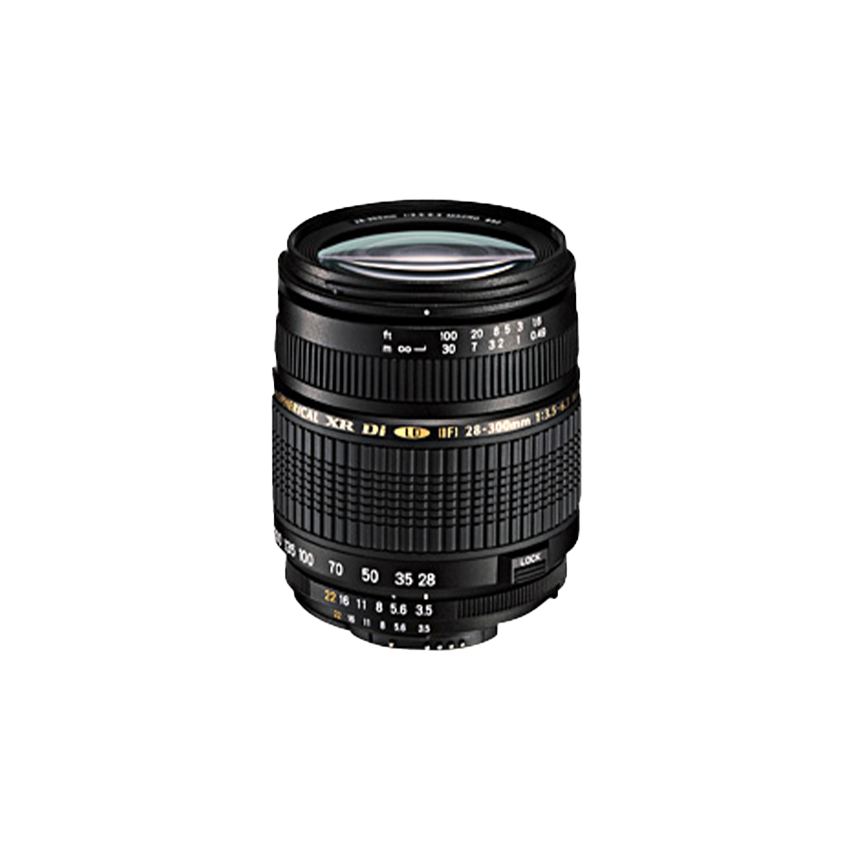
AF 28-300mm F/3.5-6.3 XRDi LD Aspherical [IF] MACRO3rd-generation 28-300mm Designed for digital compatibility.
AF 18-200mm F/3.5-6.3 XRDi II LD Aspherical [IF] MACRO18-200mm for APS-C sensors. The first model designed for digital cameras
AF 28-200mm F/3.8-5.6 XRDi Aspherical [IF] Macro 5th-generation 28-200mm Designed for digital compatibility
2007 - 2008
Fourth Generation - VC Introduction Period
Advancing to Higher Zoom Ratios and VC Integration
In 2007, marking 15 years since the release of Model 71D, TAMRON further increased the zoom ratio of Di II All-in-one zoom lenses with the introduction of Model A18, covering a focal length range of 18-250mm. The zoom ratio reached 13.9x, maintaining almost the same barrel size as the previous Model A14 while only slightly increasing weight by about 30g.
Additionally, an All-in-one zoom Model A20 featuring TAMRON's long-developed Vibration Compensation (VC) mechanism was released in the same year.
By this time, image stabilisation had become common in standard and telephoto zoom lenses. Model A20, part of the full-frame Di series, offered a focal length of 28-300mm. Equipped with a 4-stop equivalent VC system, the lens provided significant stabilisation benefits across the zoom range.
The groundbreaking stability of the VC system, achieved through TAMRON's unique three-coil system, captivated many users as an innovative in-lens stabilisation mechanism.
VC was soon integrated into APS-C Di II All-in-one zoom lenses as well. Model B003 was introduced in 2008, featuring VC and extending the focal length to 18-270mm from Model A18. With a remarkable zoom ratio of 15x and the inclusion of image stabilisation, photography became more comfortable.
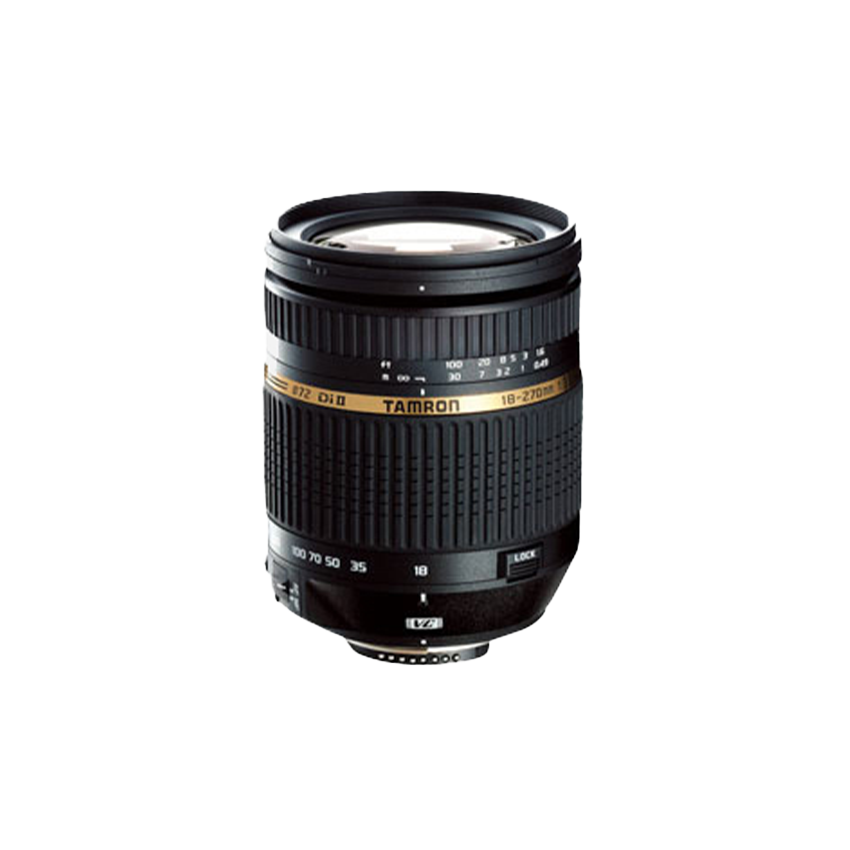
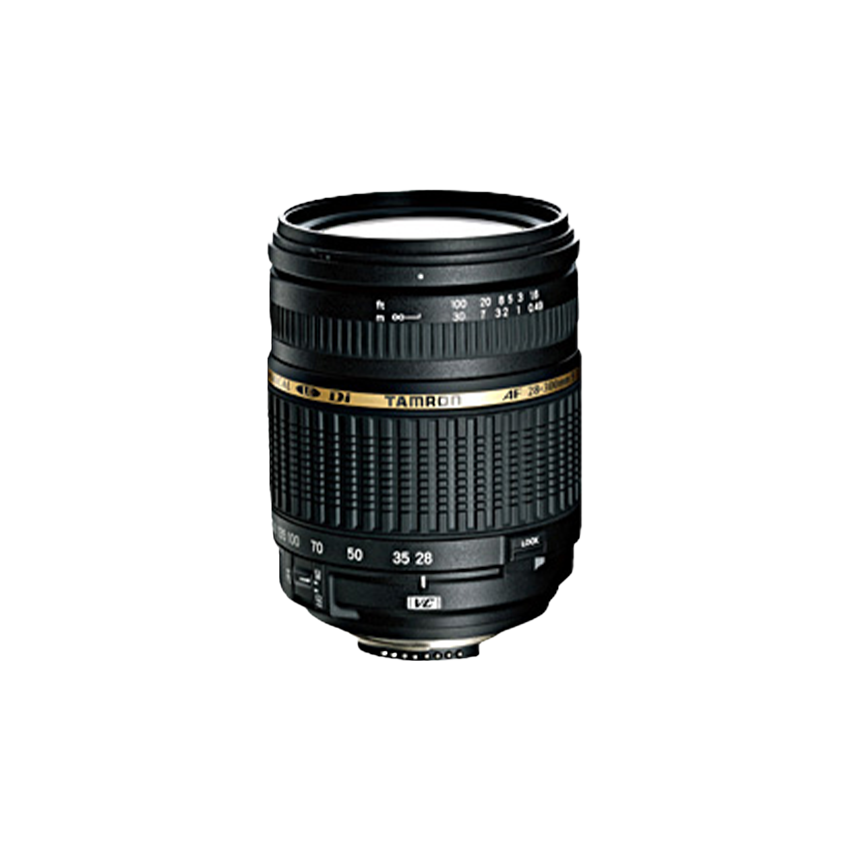
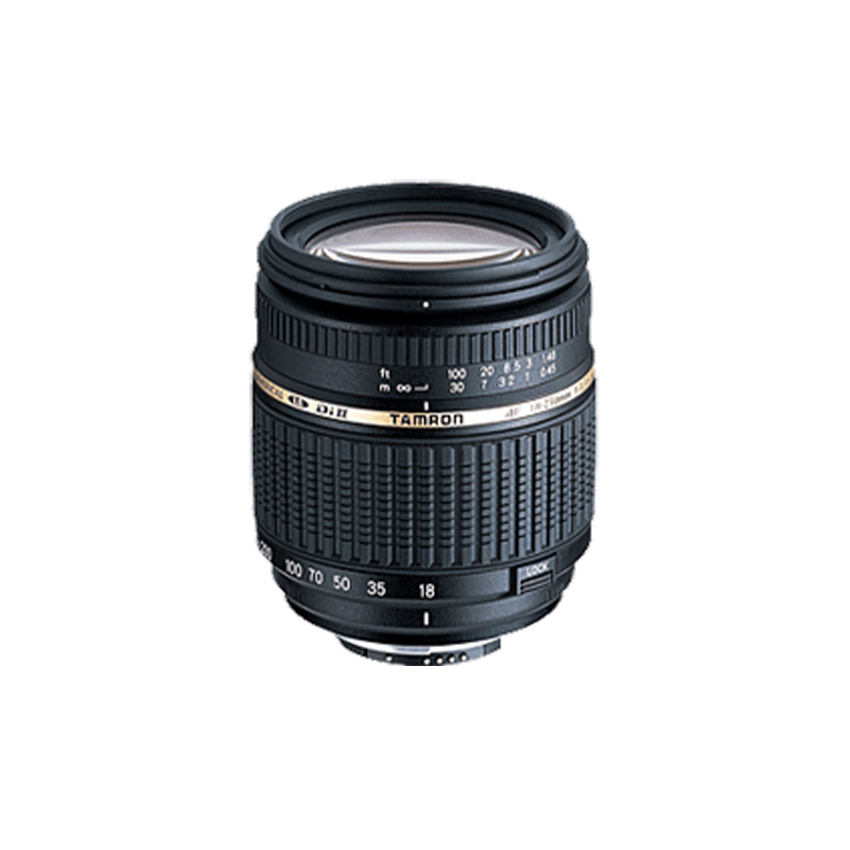
AF 18-250mm F/3.5-6.3 Di IILD Aspherical [IF] MACRO Increased zoom ratio to 18-250mm, 13.9x zoom ratio
AF 28-300mm F/3.5-6.3XR Di VC LD Aspherical [IF] MACRO 4th-generation 28-300mm Tamron's first model equipped with VC
AF 18-270mm F/3.5-6.3Di II VC LD Aspherical [IF] MACRO 1st-generation 18-270mm Equipped with VC, 15x zoom ratio
2010 - 2011
Fifth Generation - New Actuator Introduction and VC Downsizing Period
Pursuing the Ideal All-in-one Zoom
TAMRON had been using DC motors for AF drive in its All-in-one zoom lenses. While cost-effective and responsive, the motors occasionally produced noticeable operational noise.
To address this, TAMRON embarked on developing a new actuator (motor) using piezoelectric elements (=piezos). This actuator, named "PZD (Piezo Drive)," utilized the characteristics of piezo elements to improve the AF drive's quietness and enable compact internal storage within the barrel. The actuator design also contributed to a smaller "VC" implementation, resulting in the release of the APS-C All-in-one zoom Model B008.
Model B008 adopted the stationary wave ultrasonic motor "PZD" and downsized "VC", achieving a compactness close to Model A18. Designed for entry-level digital SLRs, the lens provided a quiet and smooth AF drive, offering an ideal All-in-one zoom experience.
Continuing as the "Pioneer of All-in-one Zooms," TAMRON's pursuit of challenges led to the development of Model B011 in response to the expanding mirrorless camera market around 2010. This lens was designed for APS-C sensors, featuring a compact and lightweight design, high-quality image rendering, an 18-200mm focal length, and enhanced VC for capturing sharp, blur-free photos during everyday shooting and travel.
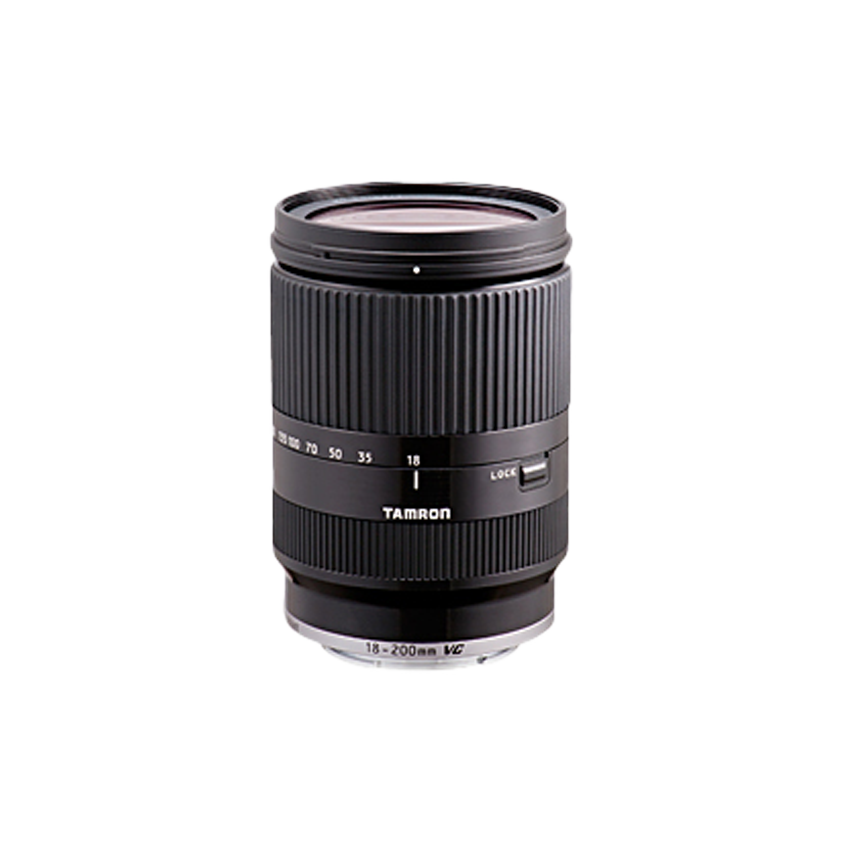
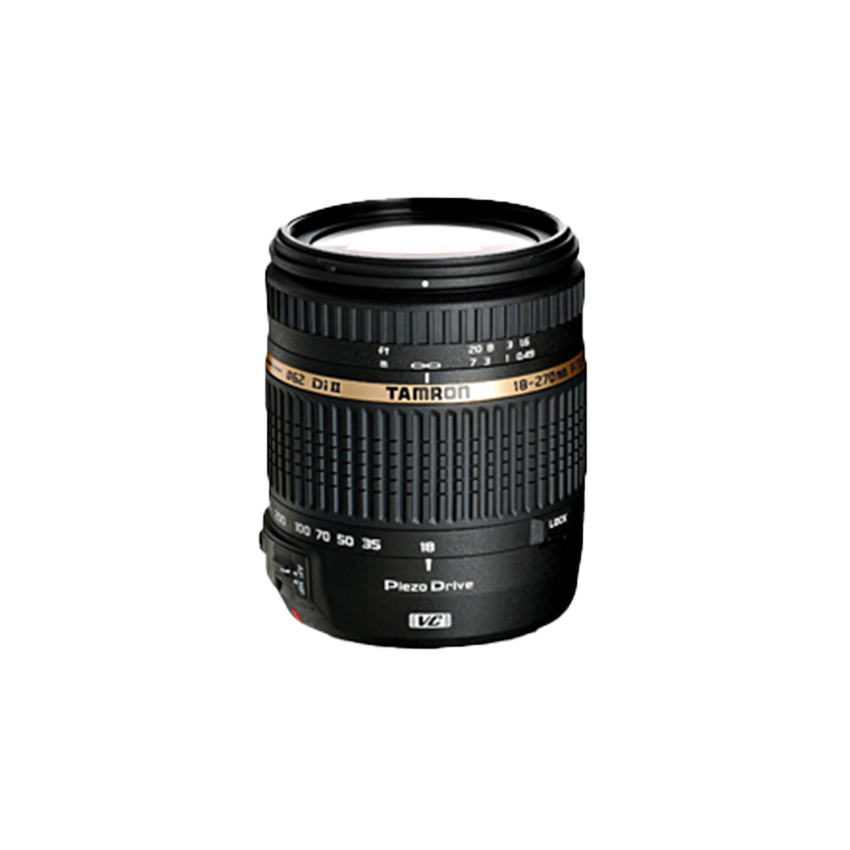
18-270mm F/3.5-6.3Di II VC PZD 2nd-generation 18-270mm Equipped with VC in a compact design
18-200mm F/3.5-6.3Di III VC Tamron's first mirrorless-designed model Equipped with a stepping motor
2014 - 2015
Sixth Generation Maturity of Functionality and Performance
Ultimate Pursuit of High Magnification Zoom Ratios
In April 2014, TAMRON introduced Model B016, enhancing the already high-quality Model B008 to achieve the ideal All-in-one zoom lens of 16-300mm. With a zoom ratio of approximately 18.8x, the lens offered a wide-angle end of 16mm (equivalent to 24mm in full-frame)* and an extended telephoto end up to 300mm (equivalent to 450mm in full-frame)*. Enhanced with a maximum magnification ratio of 1:2.9 for improved macro capabilities, the lens featured a minimum object distance of 0.39m(15.35in). The latest optical design incorporating new materials like UXR and hybrid aspherical lenses enabled size reduction and sharp image quality.
The external design of the barrel was revamped, featuring a premium feel with the use of tungsten silver in the branding. With a wide shooting range, high image quality, and performance, Model B016 was accepted as the "Super All-in-one zoom lens", setting a new standard for the category.
Shortly after, in June 2014, TAMRON released Model A010 for full-frame DSLRs and Model C001 for Micro Four Thirds mirrorless cameras. In August 2015, the successor to the best-selling lens, Model A14, was unveiled as Model B018, featuring VC for improved usability and lighter weight.
* For Canon EF mount, the 35mm equivalent is 1.6x.
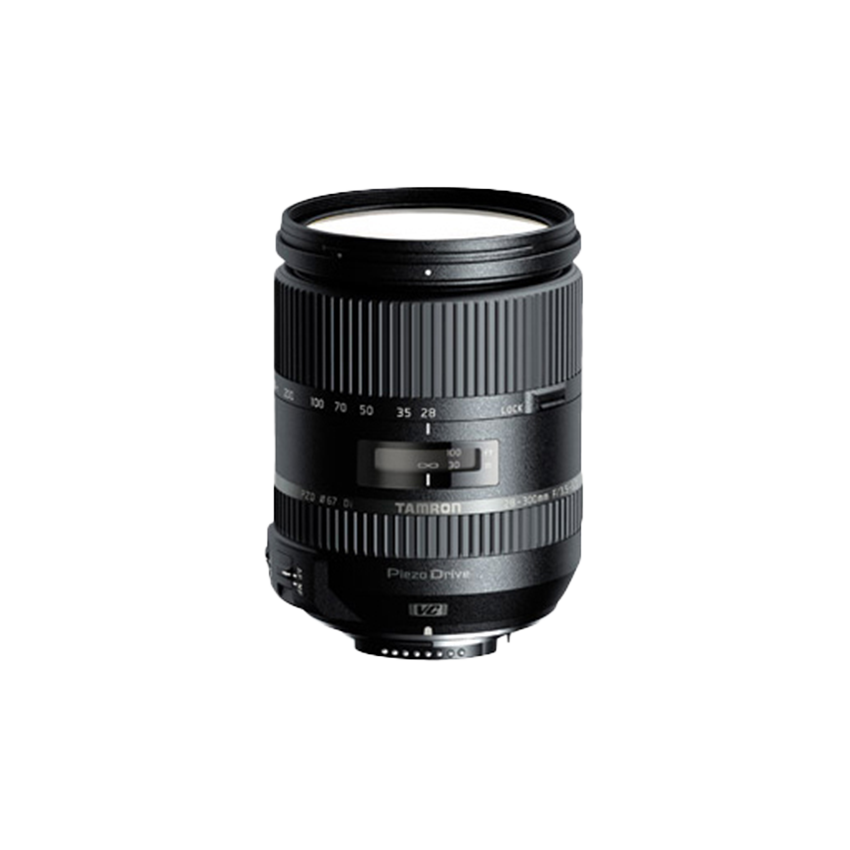
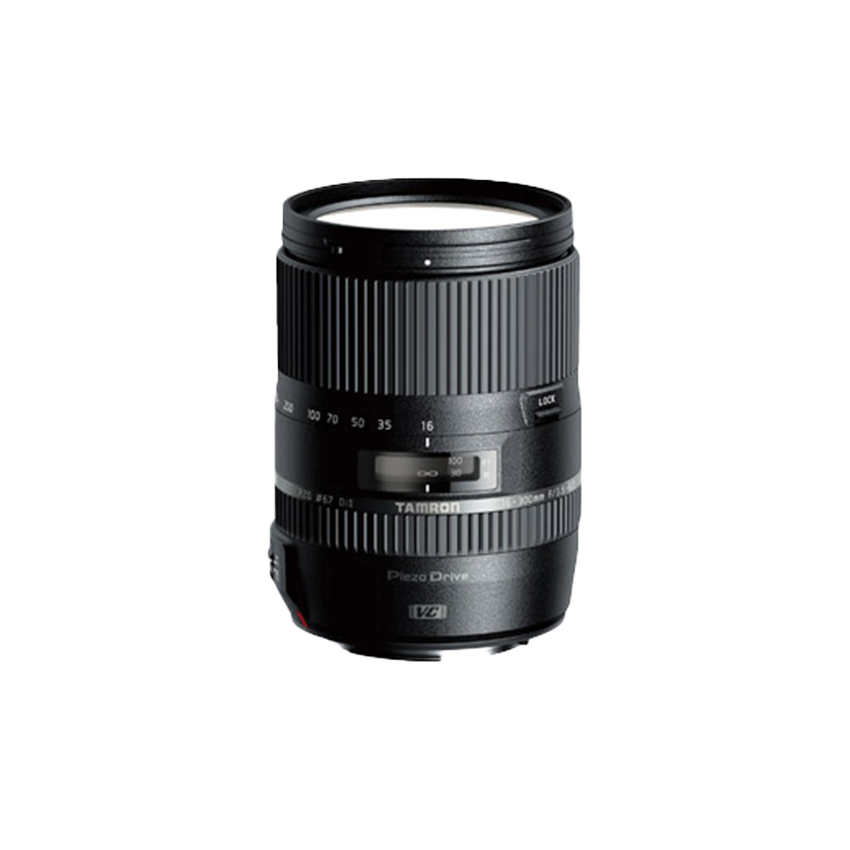
16-300mm F/3.5-6.3Di II VC PZD MACRO The ultimate high-magnification zoom, 16-300mm The highest digital zoom ratio of 18.8x
28-300mm F/3.5-6.3Di VC PZD5th-generation 28-300mm
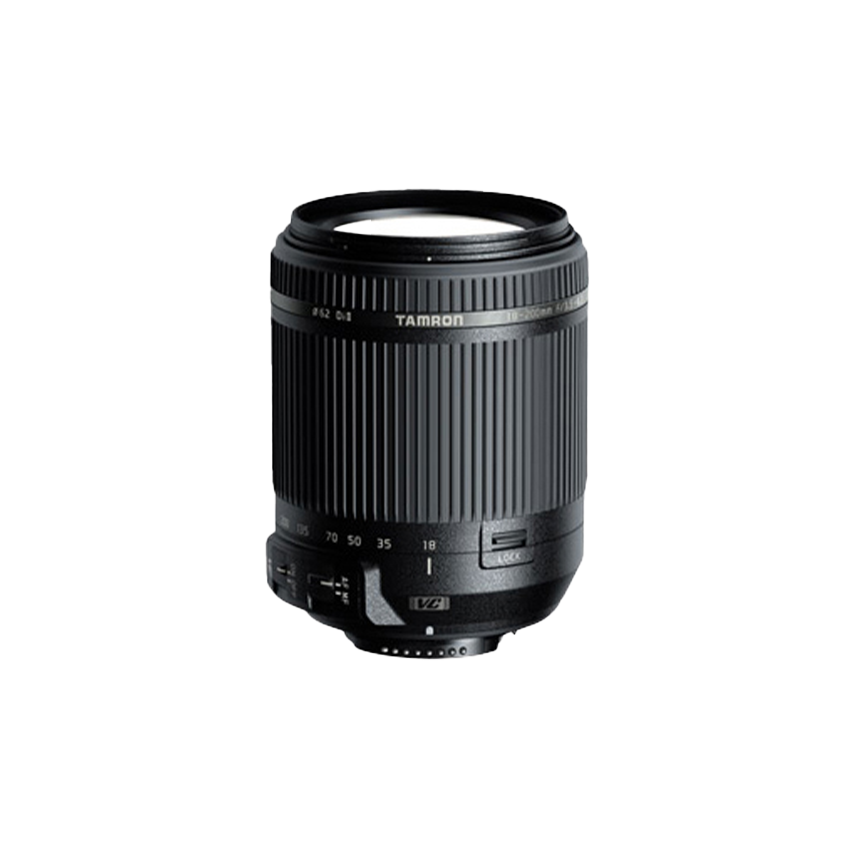
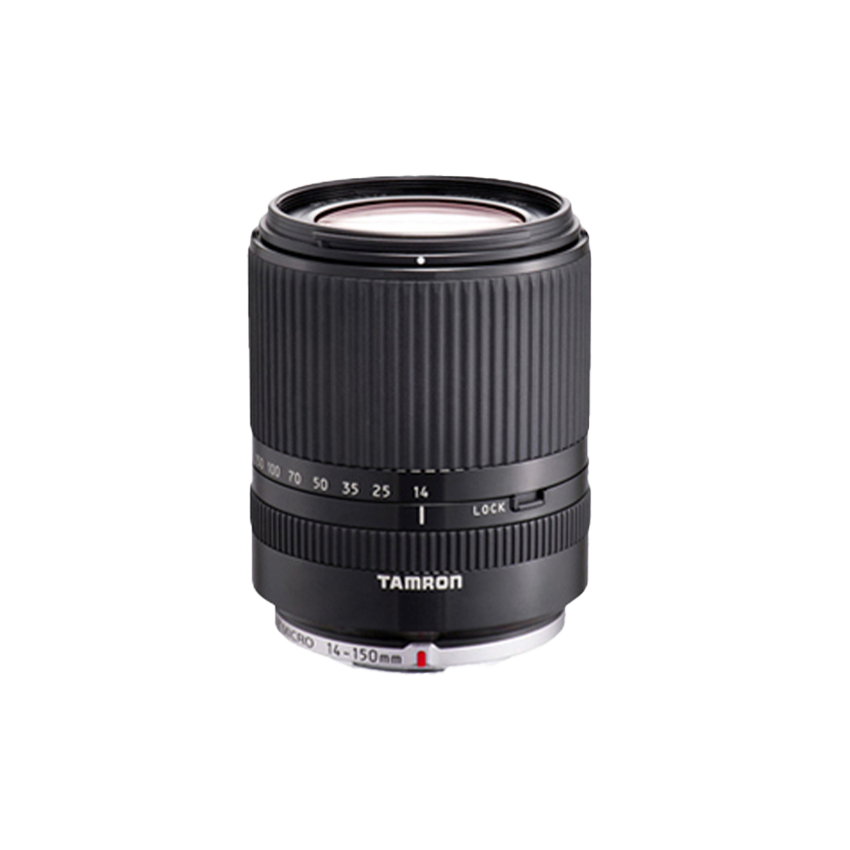
14-150mm F/3.5-5.8 Di III Designed for micro four thirds Equipped with a stepping motor
18-200mm F/3.5-6.3Di II VC Successor to the best-selling lens 18-200mm
2017 - 2024
Seventh Generation - Towards a New Stage
New Possibilities: Birth of Fast All-In-One Zooms
In July 2017,Model B028was introduced, pioneering a new category of"Ultra telephoto All-in-one zoom."Covering a focal length range of 18-400mm (equivalent to 27-600mm in full-frame)* with a zoom ratio of approximately 22.2x, the lens featured a compact and lightweight design with a 3-step retractable barrel, quad cam zoom mechanism, for smooth operation.Equipped with TAMRON's unique HLD (High/Low torque-modulated Drive) motor, the lens achieved high-precision AF drive and power efficiency. Enhanced VC support for "ultra telephoto All-in-one" shooting provided a comfortable photography experience.
To expand the possibilities of photo graphic expression
TAMRON 's All-in-one zoom lenses evolved to cater to the growing mirrorless camera market around 2020. Model A071, 28-200mm F2.8-5.6 introduced with an F2.8 aperture at the wide end, aimed to pursue fast aperture previously thought unattainable in All-in-one zooms, offering a versatile all-purpose lens. The following year, TAMRON launched 18-300mm, the Model B061, an APS-C mirrorless camera All-in-one zoom featuring the company's fastest and most precise AF, VXD (Voice-coil eXtreme-torque Drive). Extending to 300mm on the telephoto end, the lens catered to APS-C sensors, providing an All-in-one zoom experience with improved usability. In 2024, TAMRON expanded its All-in-one zoom lineup with Model A074, extending the telephoto end to 300mm for full-frame mirrorless cameras. The 28-300mm, with a zoom ratio of 10.7x across the focal range, superior image quality, and a compact size, the lens aimed to push the boundaries of All-in-one zoom lens capabilities.
* For Canon EF mount, the 35mm equivalent is 1.6x.
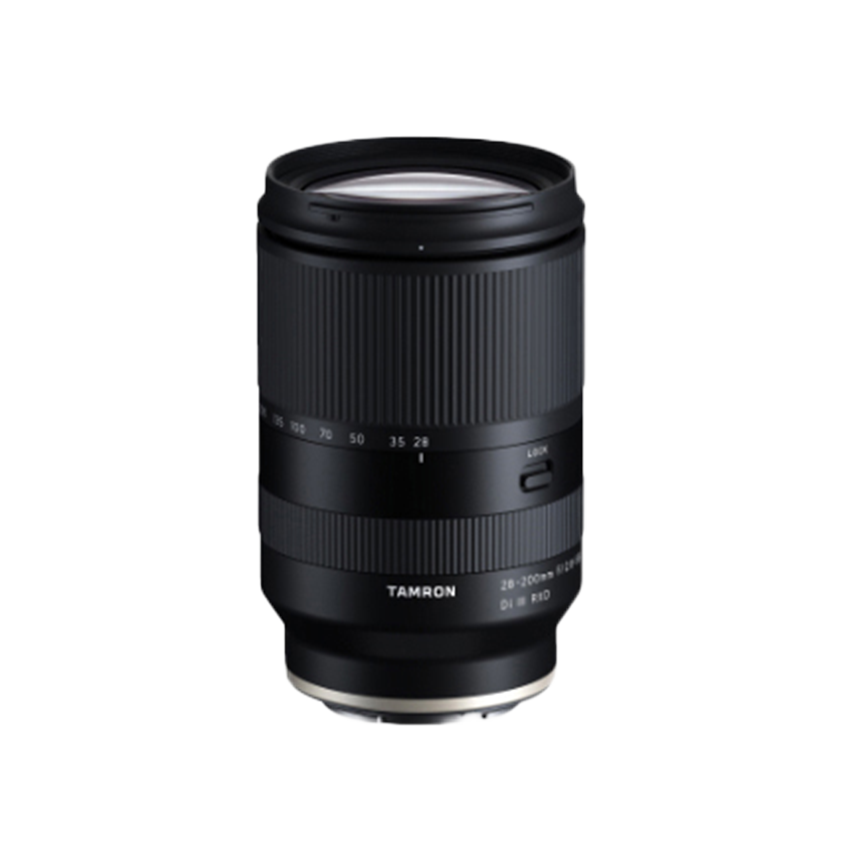
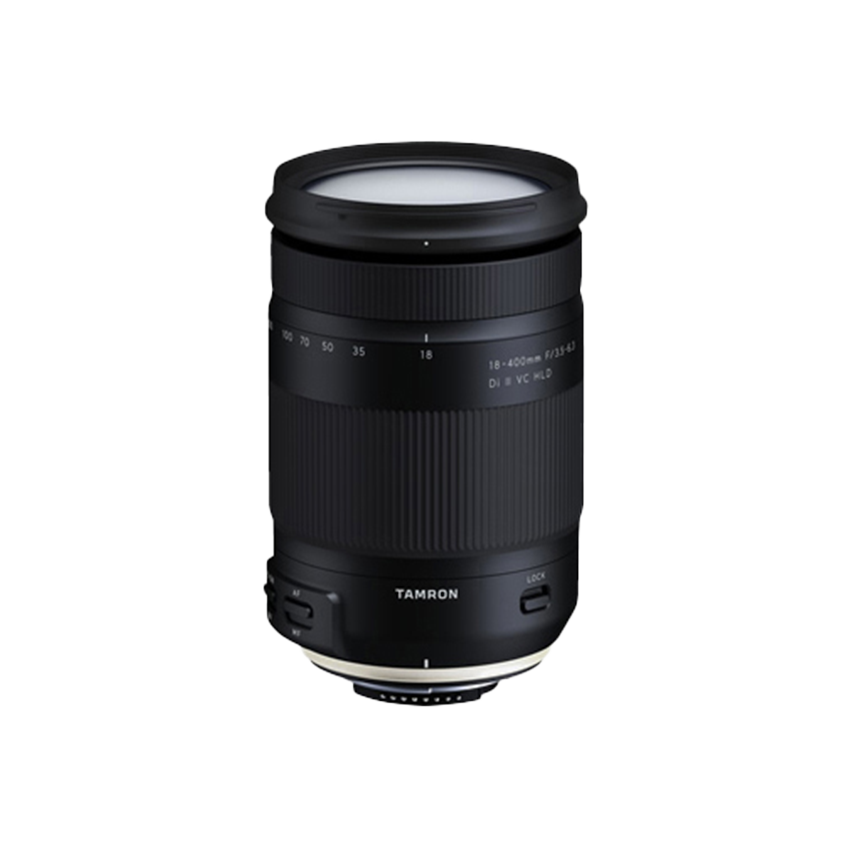
18-400mm F/3.5-6.3Di II VC HLD Achieves a 400mm telephoto end Equipped with TAMRON's proprietary HLD
28-200mm F/2.8-5.6 Di III RXD6th-generation 28-200mm with an F2.8 aperture at the wide end
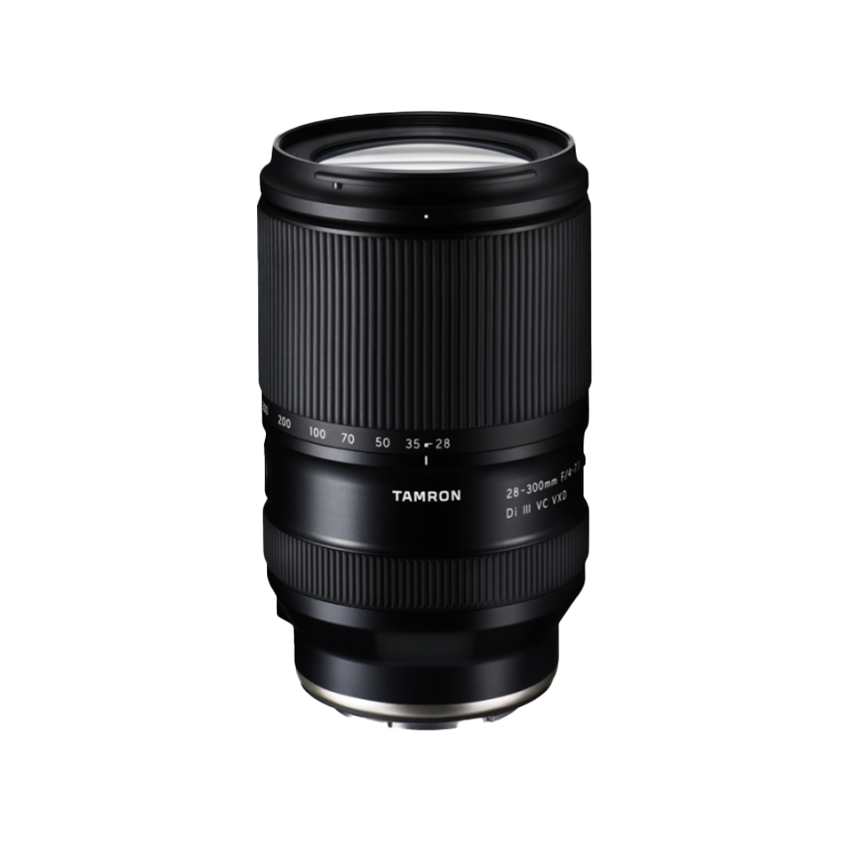
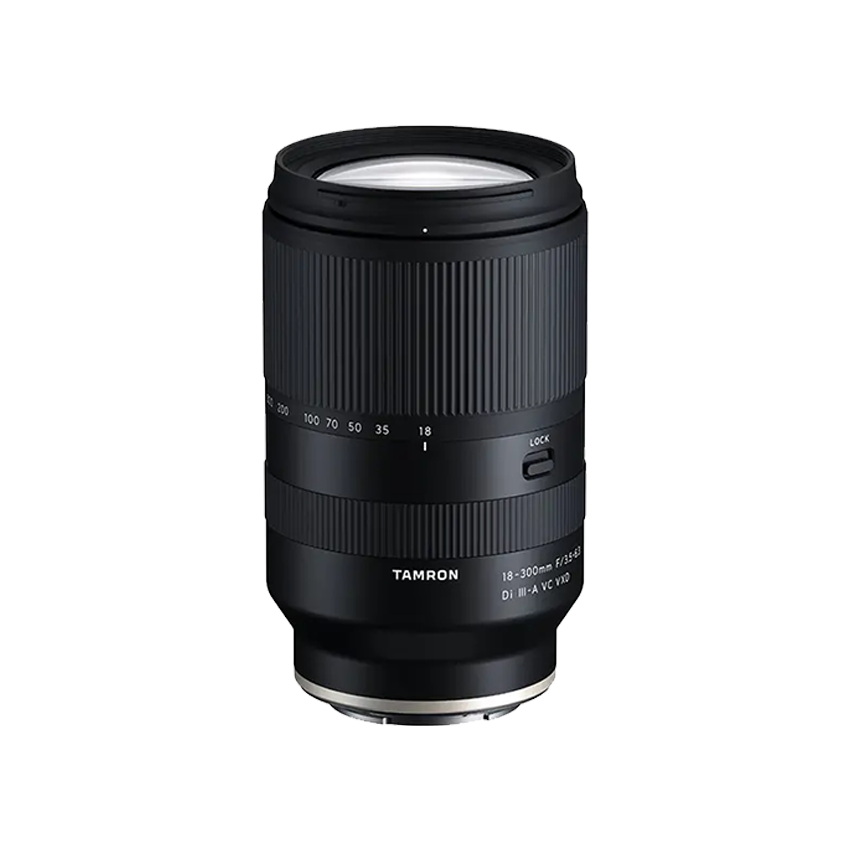
18-300mm F/3.5-6.3 Di III-A VC VXD Zoom ratio with a 16.6x ratio, an APS-C mirrorless camera All-in-one zoom featuring the TAMRON's fastest and most precise AF, VXD
28-300mm F/4-7.1 Di III VC VXDHigh magnification in the palm of your hand,10.7x zoom lens.
